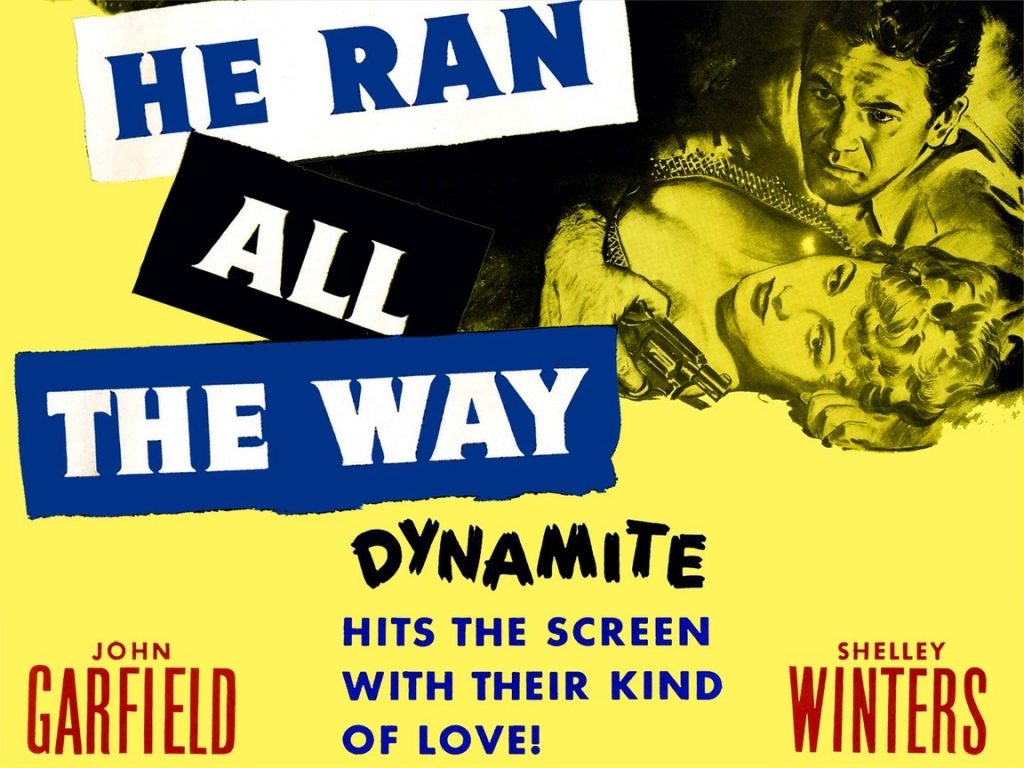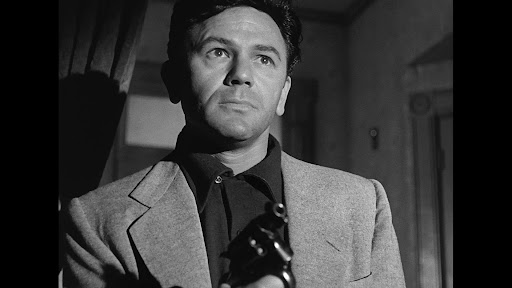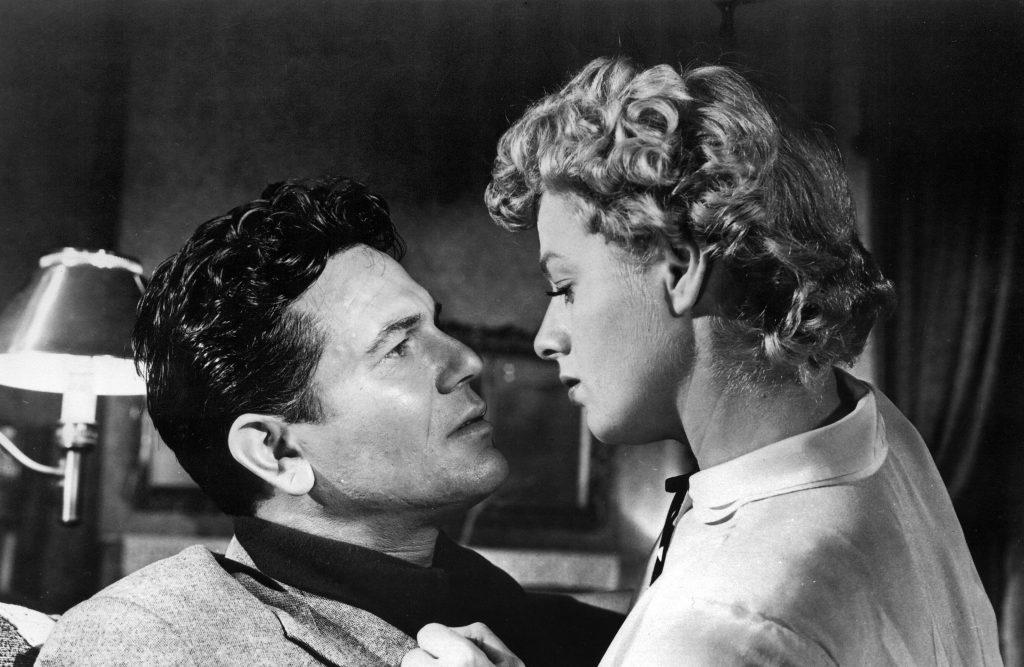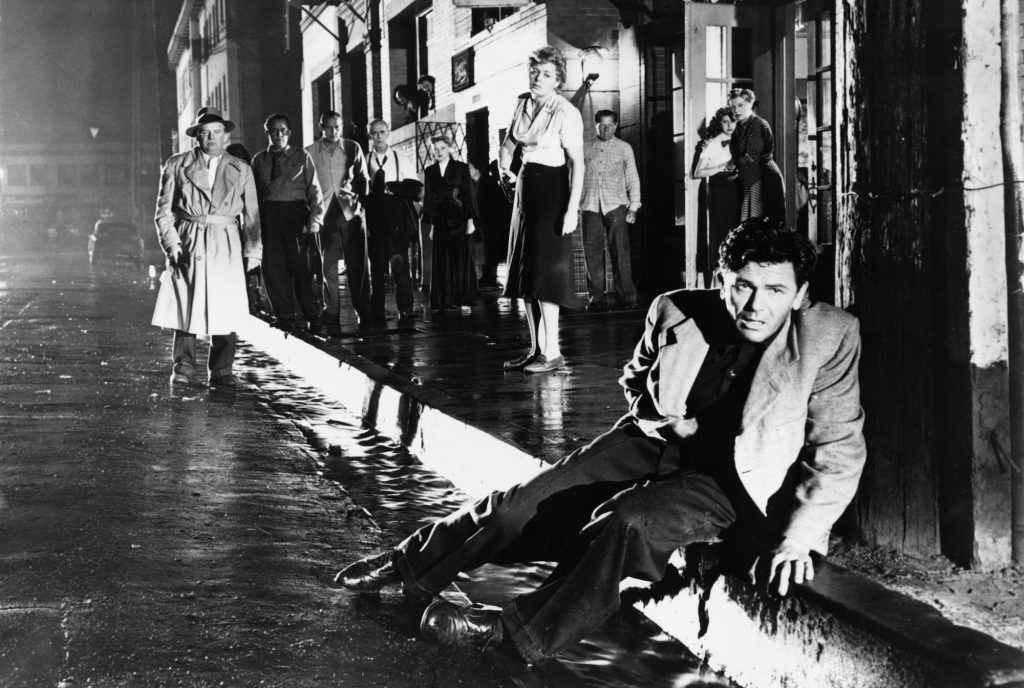“I wish I knew how you wanted me. If only you would tell me. “
Most fans making their way through Film Noir will inevitably stumble upon the John Garfield tragedy. A remarkably naturalistic actor, Garfield was adept at humanizing hateful characters so that their fate seemed unfair. The audience knew he was wrong, but they couldn’t bring themselves to his downfall. He was one of them. If Humphrey Bogart was the patron saint of Noir Cool, then Garfield was a born loser, doomed to fumble the bad hand he was given.
Unfortunately, the downfall that colored Garfield’s film roles spilled over into his personal life. The actor was asked to speak before the House Un-American Activities Committee in 1951, but his reluctance to testify put him on the dubious Hollywood blacklist. Garfield was devastated by the decision and suffered a massive heart attack before he could make a career. He died at the age of 39 not far from his birthplace in New York. He left three Oscar nominations, a string of classics, and a death that made him almost inseparable from his screen personality.

The overlap between Garfield, the man, and Garfield, the persona, makes it all He ran all the way (1951) such a remarkable farewell. It was the last film Garfield completed in his lifetime, and the plight of his character Nick Robey comes so close to off-screen paranoia that it is impossible to tell where the performance ends and the truth begins. It’s like he knows the clock is ticking and sees Robey as an outlet for his tormented situation in real life. However he tried, the film was not so much cathartic as it was prophetic.
He ran all the way has a more fatalistic bias than most noir films, as the opening scene shows. Robey has a nightmare in his shabby apartment and the experience makes him stumble. He asks his partner to postpone the robbery on the grounds that he is “out of luck” today, but the request falls on greedy ears and they move on. Robey’s dream is treated as a moment of clarity, a moment when he could have changed things, but the quick buck allure turns out to be too much to resist. Robey ignores his common sense and shoots a police officer. Suddenly this nobody is a wanted man.

Robey is almost cornered at an amusement park, but a chance flirtation with a woman named Peg Dobbs (Shelley Winters) brings him down. He plays up his interest in her and insists that she take him over for coffee. Inside, however, Robey’s fear prevails and he takes the entire Dobbs family hostage. It’s known noir territory, but the script adds a wonderful little crease when Robey looks through the family newspaper. His paranoia is so strong that he poses as a police murderer even though his name wasn’t even printed. It is a revelation that Garfield delivers with devastating self-despair. He can’t seem to take a break.
The rest of the film takes place in the Dobbs household, with sporadic cuts to the outside world. It starts to resemble a play as the characters argue as they move in and out of the same room. Garfield shines in these long scenes that casually alternate between cruelty and unexpected flashes of heat. His character bonds with Peg’s little brother Tommy (Bobby Hyatt), and he even shares a moment of understanding with the Dobbs matriarch (Selena Royle). Conversely, he berates Peg for her appearance and throws verbal abuse away if he does not lust after her. The film never feels the need to categorize Robey as a bad seed or a misunderstood good guy, and that’s all the better. Instead, the film lets the viewer sift through their impulsive decisions and make their own decisions. It’s a refreshingly modern approach and a reminder that the ambiguity of noir has often allowed it to get into places other genres couldn’t reach.

The downfall that lingers over the film is promoted by Garfield, but it is not solely responsible. He ran all the way also benefits from scriptwriting by Dalton Trumbo-Hugo Butler and tight directing by John Berry. All three men were privy to the red scare that flooded the industry, and given their liberal views, one cannot help but interpret their approach to the Robey character allegorically. Robey’s crimes are nothing like communism, but the paranoia that seized Hollywood is present in every picture, and the passing blows to classicism and American greed are commonplace in the works of Trumbo, Butler, and Berry. Unsurprisingly, they’d blacklist Garfield by the end of the year.
Robey’s premonition of bad luck comes true when he confides his escape plans to Peg. Once again his paranoia proves his undoing. He accuses Peg of setting it up and runs away, only to be struck down by the police. As he collapses on the sidewalk, he realizes that Peg has kept his word. Too little too late. The sequence is shot in devastating close-ups, and Garfield’s pained expression is only matched by the image of his character crawling towards the headlights of a parked car. In one final, haunting moment of futility, he falls over before he can reach the light. Only the black asphalt remains for the patron saint of Noir.

He ran all the way will always be a notable release as it will be Garfield’s final film. The parallels between his life and his character’s predicament are innumerable and his performance is breathtaking, but even without the real world context, the film is a remarkable piece of noir storytelling. The script has an ironic punch and the cinematography by James Wong Howe is some of the best of the period, especially towards the very end of the film. As for swan songs, it doesn’t get much better.
USEFUL INFORMATION: Due to Trumbo, Butler, and Berry’s blacklist, all three male names have been removed from the film. Your credit has since been restored.









